The best camping axes and hatchets: light chopping tools
Our tried and tested selection of the best axes and hatchets for processing firewood at camp
For processing wood on your backcountry trips, the best camping axes and hatchets are a no brainer. In terms of usefulness, a hatchet is up there with a quality folding saw and its lightweight qualities make it very portable for your camping trips. Meanwhile, the heavier axes in our selection are great if you work the land, chop your own firewood or are involved in a bushcraft association.
We've tested a selection of the best camping axes and hatchets available in 2025 to bring you this guide. Assessing qualities like durability, handle construction, ergonomics, head design and the shape of the bit, as well as considering price point and overall value, we've arrived at our favorite half-dozen.
For us, the best camping axe is the Hults Bruk Akka, which is versatile enough for mid-sized chopping and detail work. If money isn't a limiting factor, we also recommend checking out the premium Gränsfors Bruk Small Forest Axe, with a beautiful hand-forged head and hickory handle that can be used one or two-handed.
The quick list
This list lets you compare all the camping axes in this guide at a glance, and lets you easily jump down the page for a full review of each one.
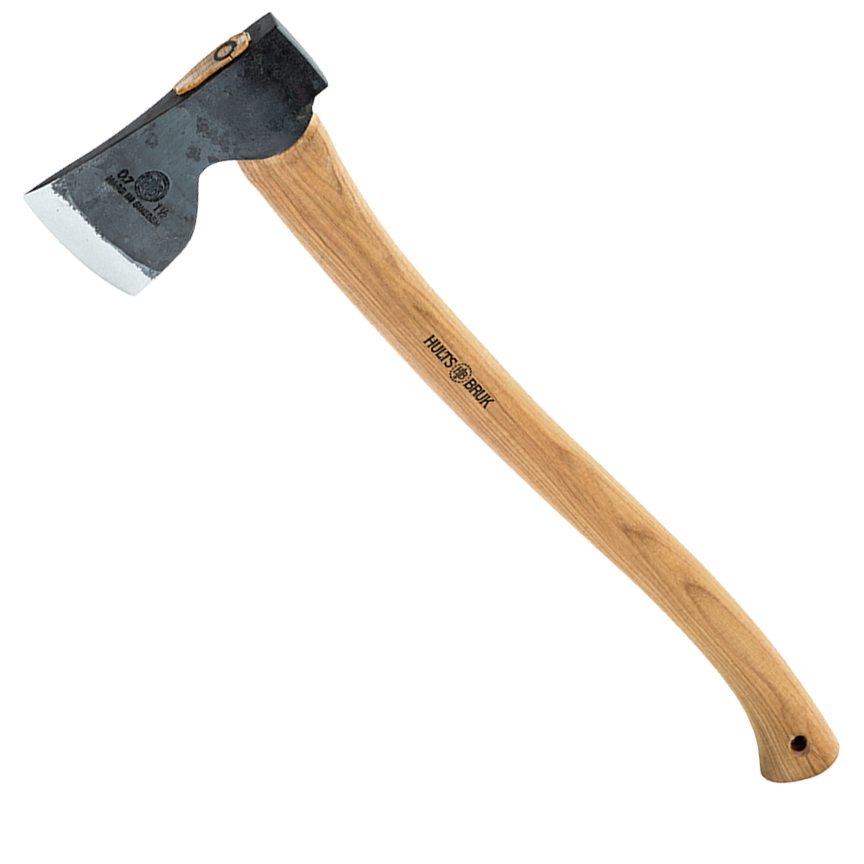
Best overall
We love this premium camping axe with an extended handle for extra power, and a versatile head profile for a variety of tasks.
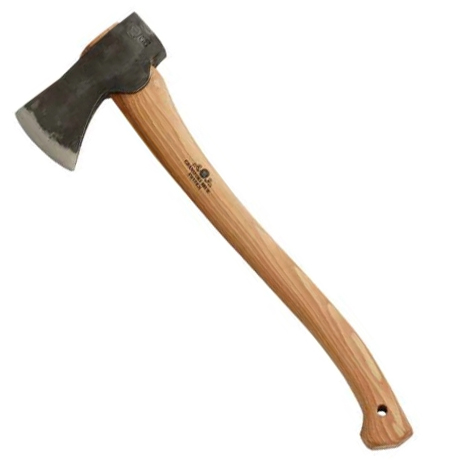
Beautifully and sustainably crafted, with a hand-forged head versatile hickory handle – we're big fans of this extremely capable axe.
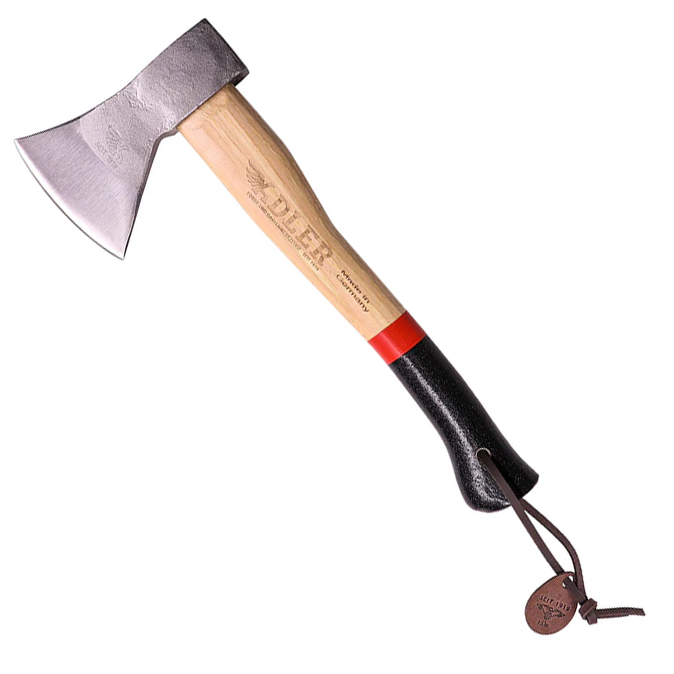
Best for backpacking
We approve of this stout hiking hatchet for all kinds of tasks around camp – it's Well made and versatile, particularly for the price.
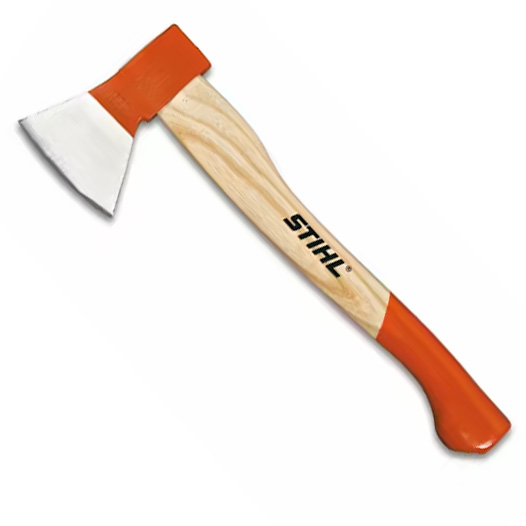
We like this forestry hatchet that's great for camp and trail use too, offering plenty of bang for your buck.
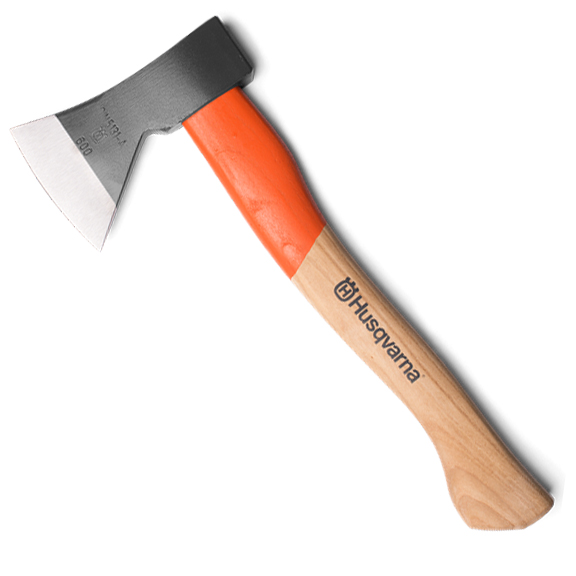
We like the way this broad, wedge-shaped head of this no-nonsense hatchet splits logs cleanly every time without getting stuck.
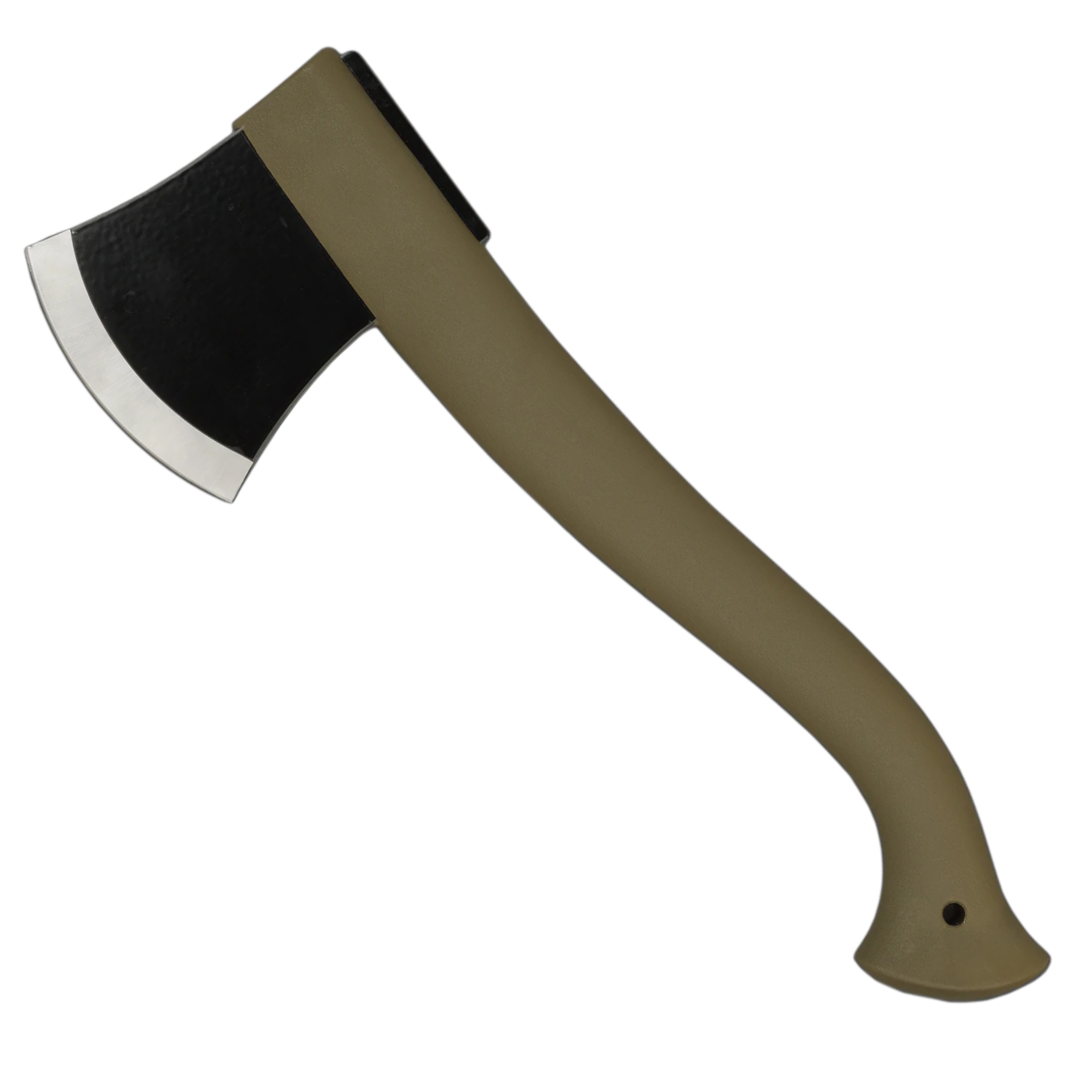
Weighing just under a pound, we reckon this super lightweight axe is great for chopping kindling and small logs in the backcountry.
The best camping axes we recommend in 2025
You can trust Advnture
The best camping axe overall
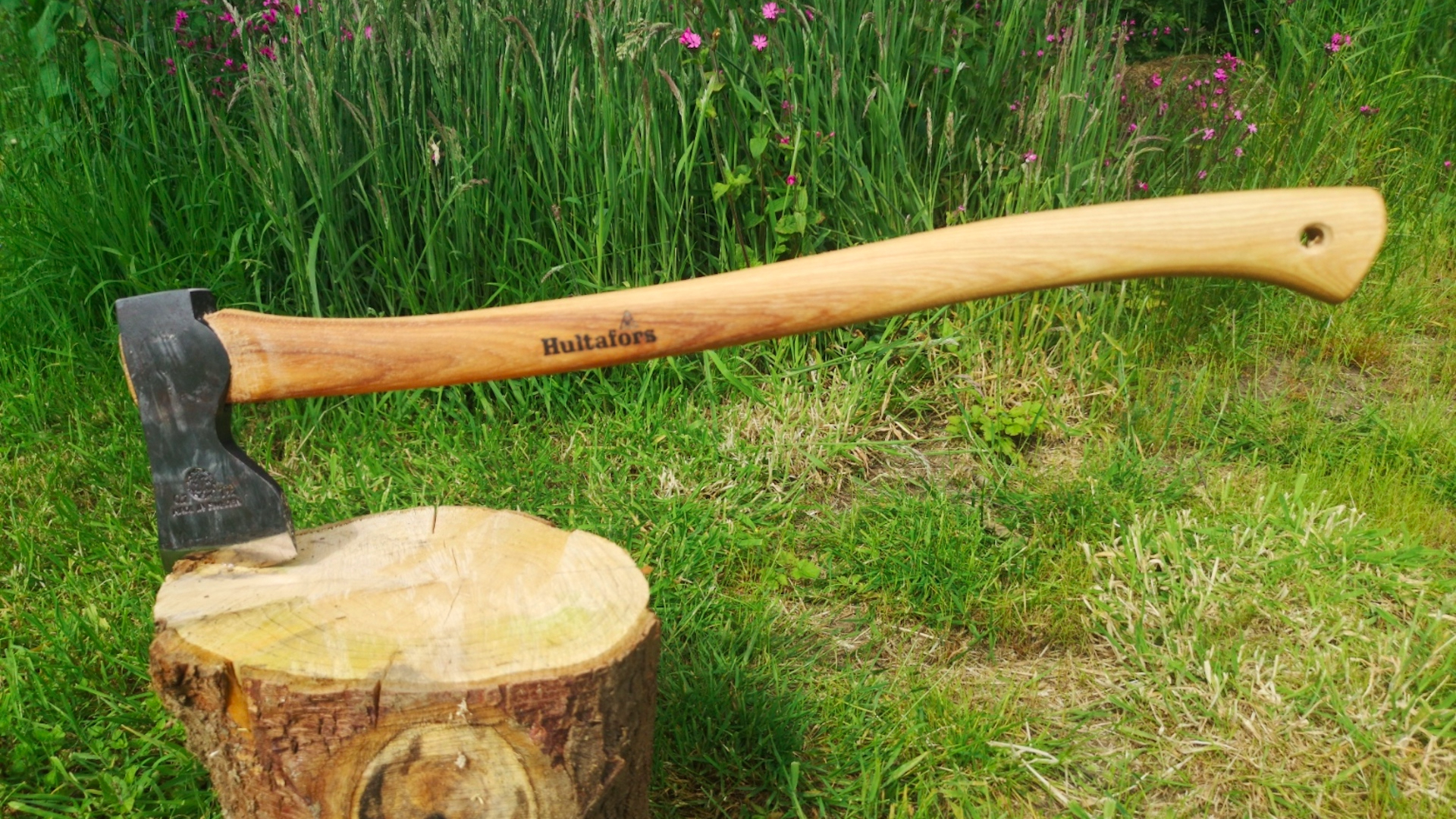
Specifications
Reasons to buy
Reasons to avoid
This premium, hand-forged felling axe has a 1.5lb (approximately 700g) head and a 23in hickory handle. It’s not the most compact axe around, but that extra heft enables this axe to be used for heavier work like clearing trails, as well as general use around camp.
The head is a fairly unusual but very versatile shape, well suited to both mid-size chopping and more detailed work. "It feels very precise" says our expert, "with a large cutaway that allows the user to choke up on the handle for very fine control". In two hands, we found the Åby is great for limbing logs, snedding branches, or felling small-to-medium-sized trees. In fact, it’s a fantastic axe for processing larger volumes of wood.
You could just about strap this axe to the outside of a decent-sized trekking pack, and it’s no heavier than many shorter axes or the more robust hatchets out there. But we think the Åby delivers significantly more felling power than almost anything else in its weight class. It might be more than many campers need, and it isn’t cheap either. But if you want a lifelong camp companion for everything from bushcraft weekends to wilderness canoeing trips, this little powerhouse is our top pick for the best camping axe.
Read our full Hults Bruk Akka / Hultafors Åby Forest Axe review
The best camping axe for limbing logs
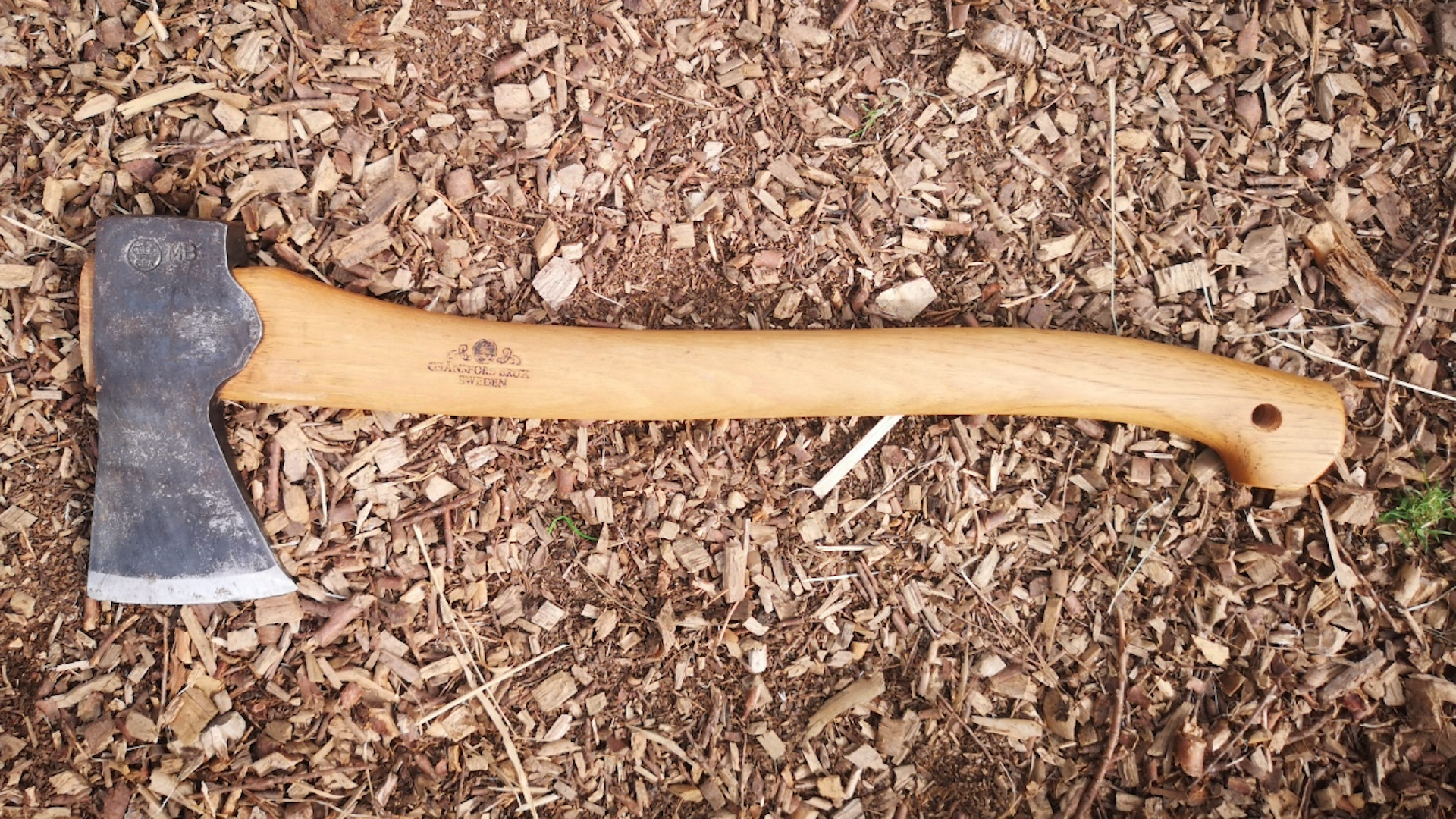
Specifications
Reasons to buy
Reasons to avoid
Gränsfors Bruk's many sustainability commitments are laudable and the finished products are also outstanding. The Small Forest Axe has a beautiful hand-forged head with a versatile 19.5in hickory handle. On test, we found its size meant that could be used with one hand or two, making it the best camping axe for many outdoors folk, including noted experts like Ray Mears. Essentially, it straddles the divide between a small hand axe and a light felling axe. It’s also still light and compact enough to carry strapped to the outside of a decent-sized rucksack.
The total weight is a fraction under a kilogram – just over two pounds – which isn’t much heavier than many of the more robust hatchets out there. In contrast to a hatchet, however, you get an "extremely versatile and capable axe with considerable chopping and felling power" according to our expert. Of course, it might be overkill for many campers, but we understand why many people like the idea of a hand-forged tool that can be traced right back to its individual maker. If that’s you, you’ll undoubtedly appreciate this finely crafted camping axe, which will no doubt become a prized possession.
Read our full Gränsfors Bruk Small Forest Axe review
The best camping axe for backpacking
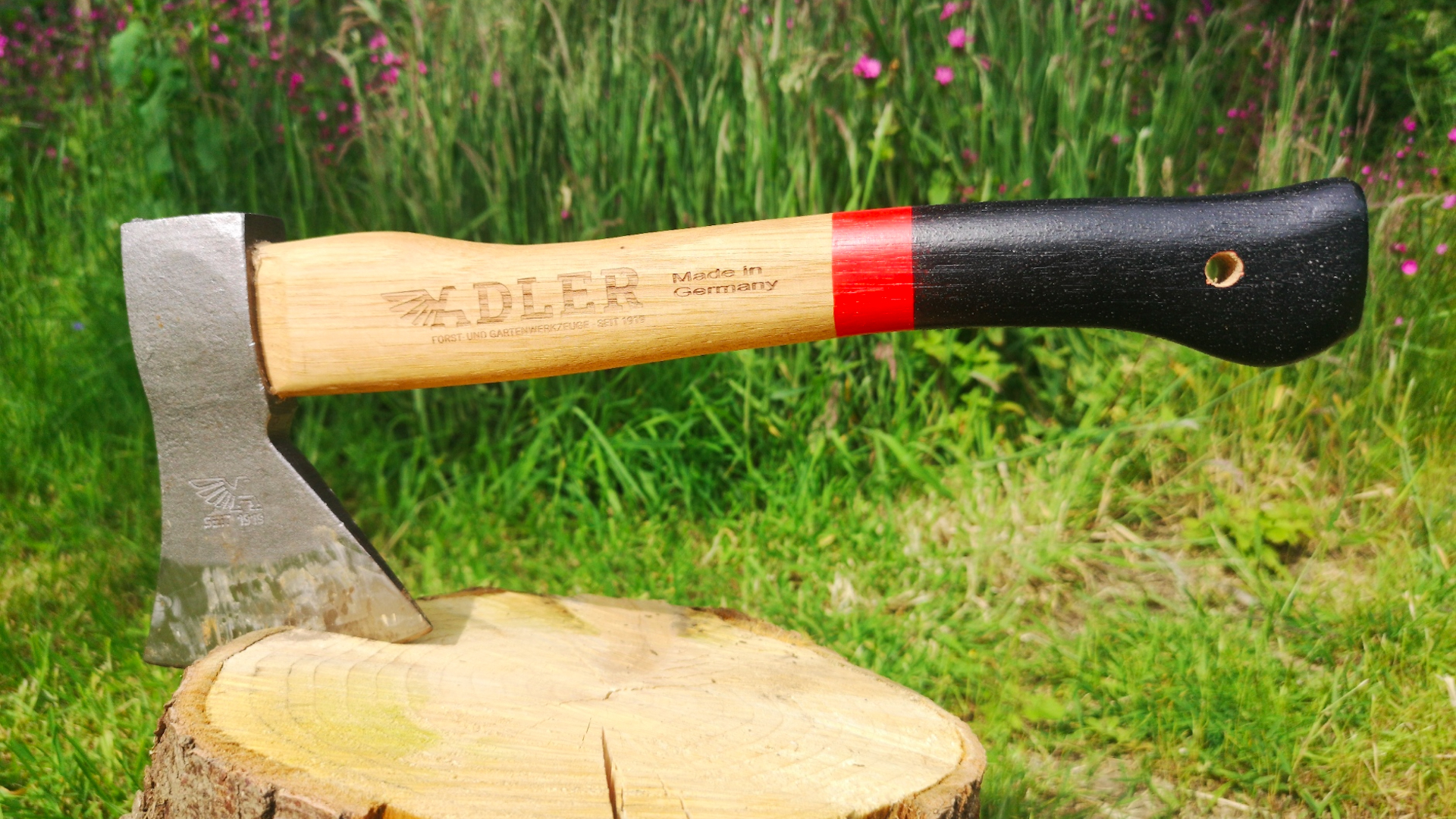
Specifications
Reasons to buy
Reasons to avoid
This is a stout little hiking hatchet with handsome heritage looks, forged in Germany. The head is a very traditional and well-proven shape, with a flared beard and an extended cutting edge. It has a conventional tapered wedge profile, with thick lugs around the eye for added strength and heft.
The back of the head has a chunky poll or butt that "works well for hammering tent pegs or similar camp tasks" according to our camping expert. The head is extremely well seated on the handle, which is made from American hickory. It’s well sculpted too, feeling elegant and precise yet strong and secure in the hand during our test.
The steel is of high quality and the hatchet came with a keen edge. It sharpens up easily with a circular whetstone. All in all, this is a very versatile and well-made tool with plenty to recommend it and no real negatives to speak of. It is slightly more expensive than entry-level hatchets, but the superior quality is evident, while still being cheaper than a traditional hand-forged axe. We think it's one of the best camping axes for value.
Read our full Adler 1919 Rheinland Hatchet review
The best budget axe
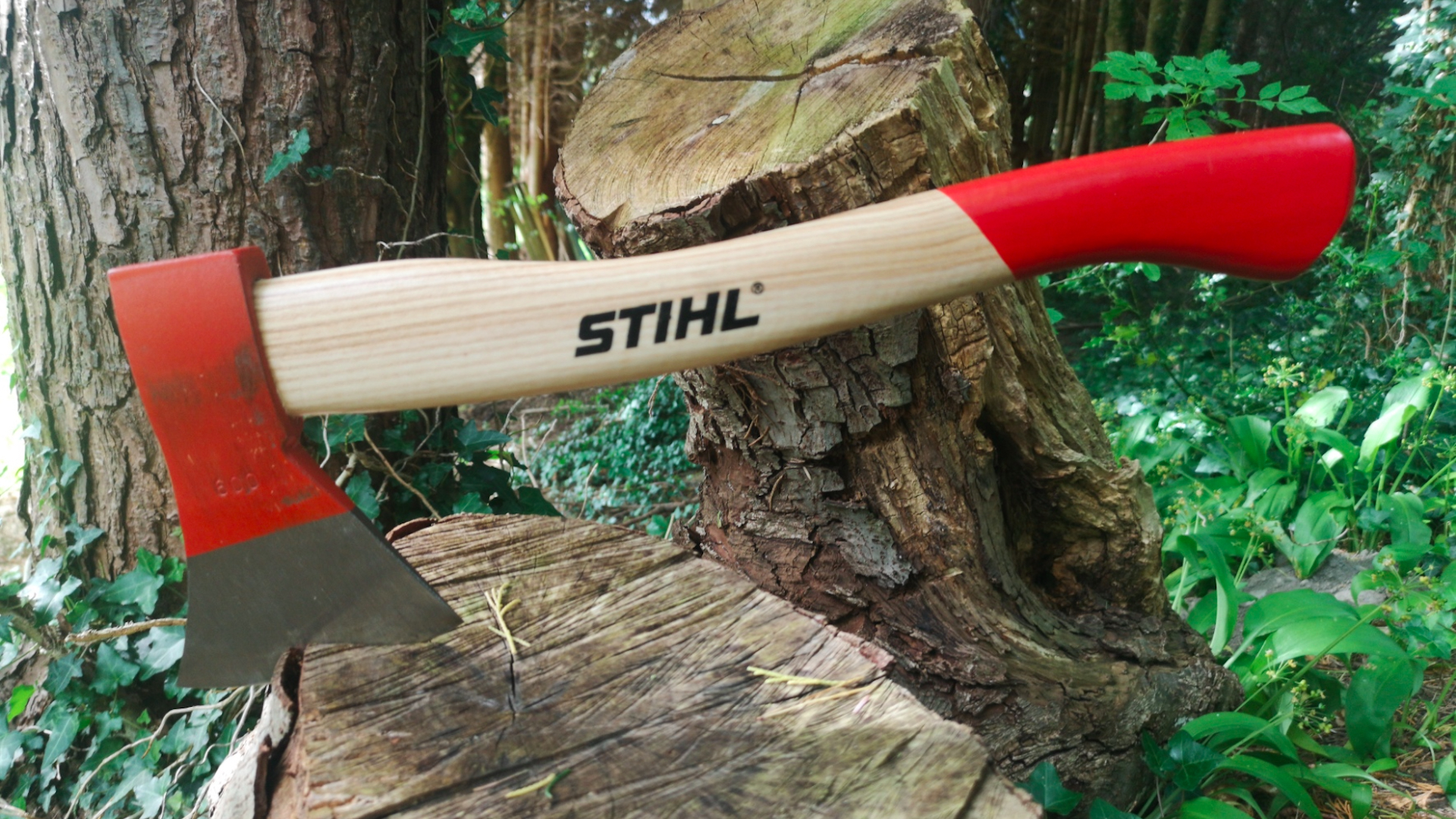
Specifications
Reasons to buy
Reasons to avoid
This traditional-looking hatchet has a carbon steel head forged in Italy, fitted to a chunky ash handle. It has a large, squared-off poll or butt for hammering, and a tapering wedge-shaped bit that’s a versatile shape for varied cutting and chopping tasks. On test, we found the cutting edge came sharp from the factory, and the steel is of good quality. Being about an inch longer than other hatchets in its class, it has slightly more leverage and power whilst still being short enough for easy one-handed use.
"I liked it a lot," says our expert reviewer "and on camp it proved a versatile tool". It has plenty of head weight to split small logs and chop kindling easily. The cutting edge has plenty of belly for good penetration. The handle is comfortable to use despite its varnished finish too.
In fact, if you’re on a tight budget, we think the AX6 is one of the best camping axes out there, You get plenty of bang for your buck here.
Read our full Stihl AX6 Hatchet review
The best camping axe for splitting logs
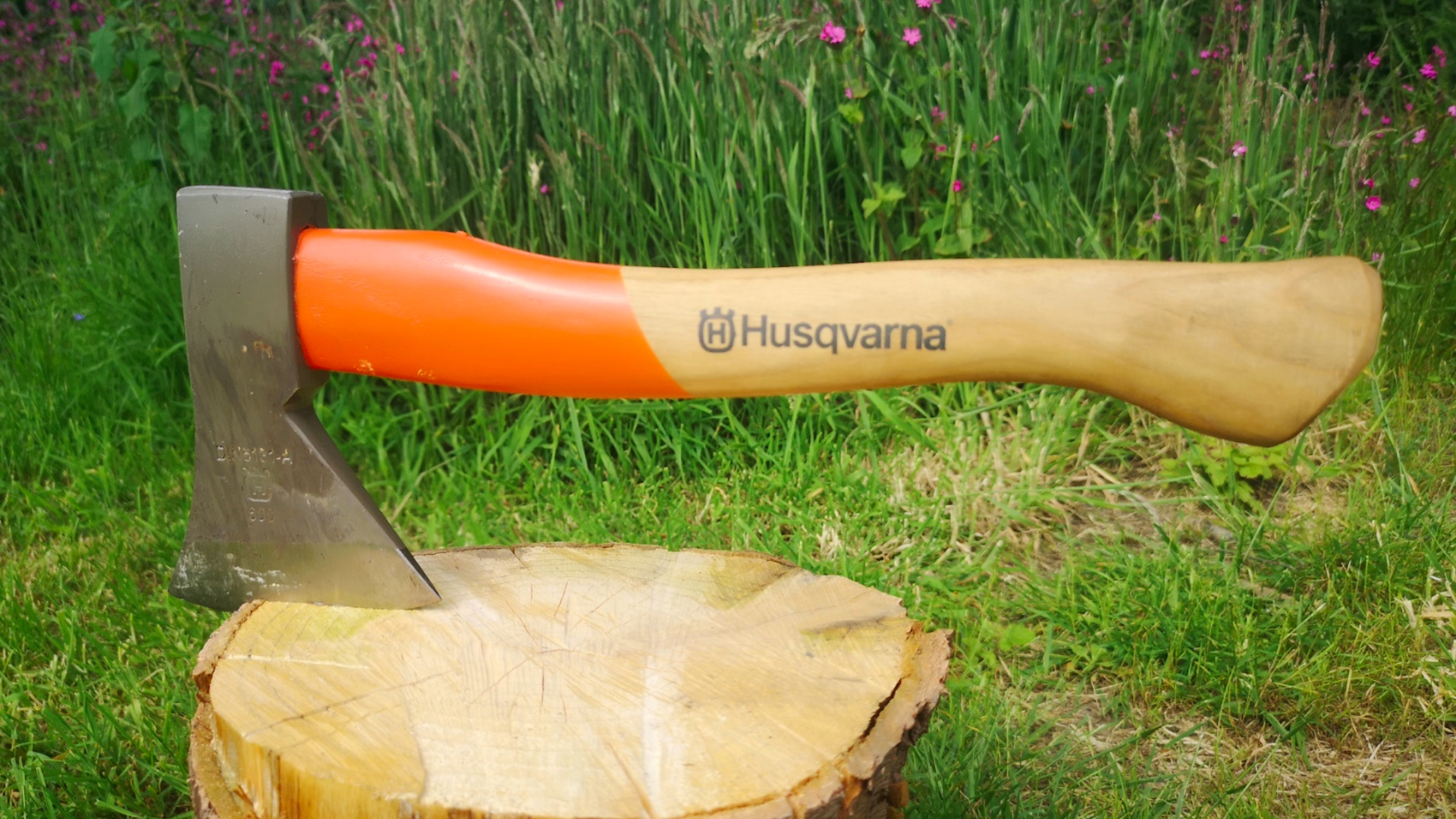
Specifications
Reasons to buy
Reasons to avoid
This feels like a sturdy, no-nonsense hatchet and proved itself as such on camp during our tests. The broad wedge-shaped bit splits small logs cleanly, without getting stuck. It works just as well for chopping sticks and kindling thanks to plenty of head weight and a pronounced palm swell that enables an easy chopping stroke.
The handle is comfortable to use, and the natural, unvarnished wood also absorbs palm sweat, ensuring a good grip. It is quite chunky, though, so best suited to larger hands. The length enables easy one-handed use and feels well-balanced overall. The large head cutaway also enables you to choke up for more precise carving work too, which is great for camp bushcraft projects. Though the steel seems slightly softer than some of its rivals, it sharpens easily. Our expert reviwer summarized: "And all in all, for the price, this is a solid hatchet that, with a little regular TLC, ought to see the user through many years of good service."
Read our full Husqvarna Hatchet review
The best camping axe for light tasks
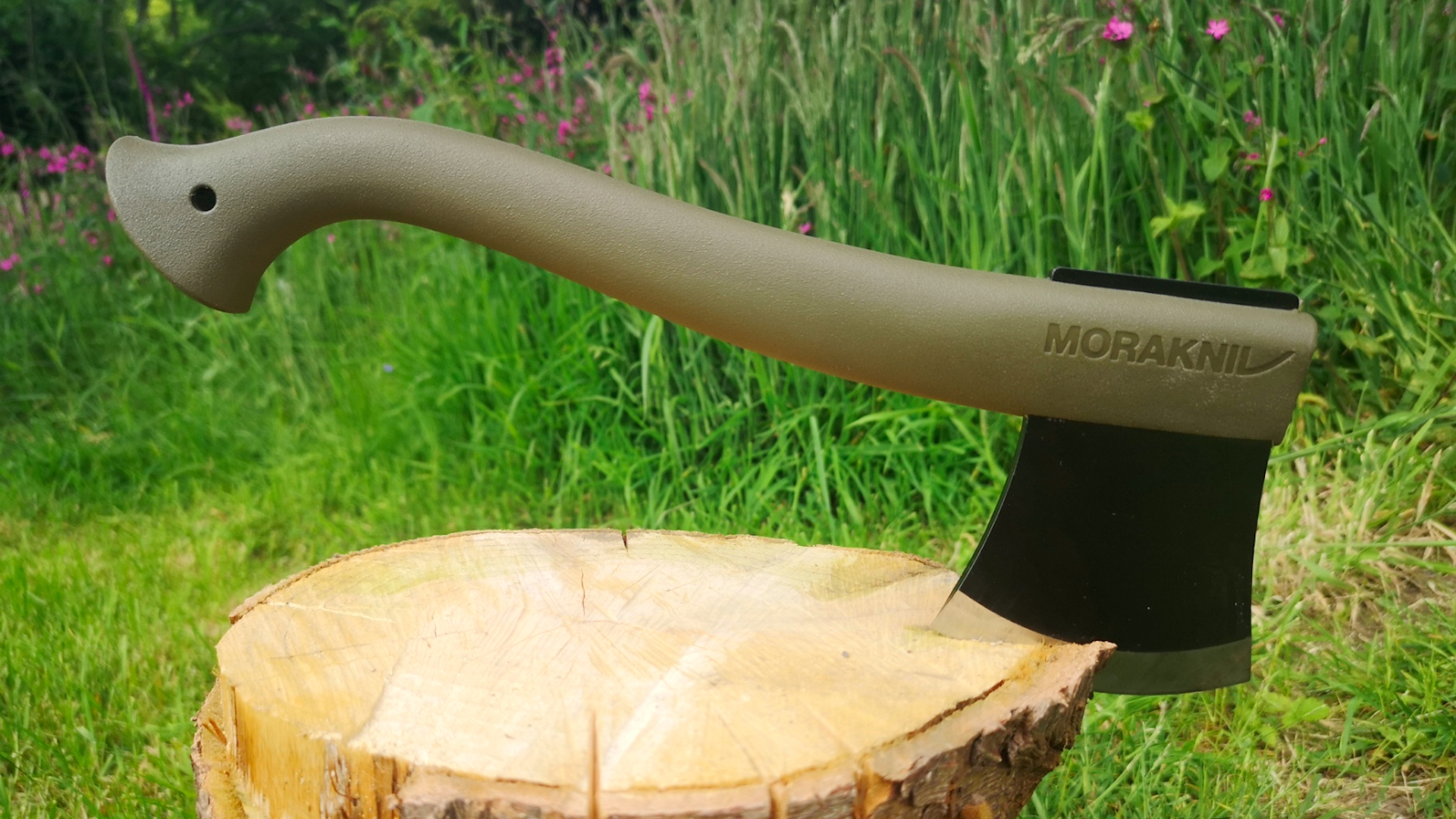
Specifications
Reasons to buy
Reasons to avoid
This axe has a 6mm thick, black-coated steel head slotted into a polypropylene handle, which comes in two colors – muted forest green or high-viz orange. It tips the scales at around half a kilo, or just over a pound, and its overall length is just over 12 inches. So, it’s a very compact tool that slides easily into even a small pack. Our expert reviwer states that "it’s also light enough to be a viable option for backcountry camping trips and backpacking adventures."
The Mora has decent head weight for a compact hatchet and the head is made from high-quality boron steel, which is slightly harder than most standard carbon steels. The bit has plenty of belly for its size, and a double-bevel Scandinavian grind. The textured handle offers good grip and has a turned-in palm swell that sits comfortably in one hand. On test, it surprised us with its capabilities.
It's not so good for clearing trails or limbing branches, mostly because it’s just too light and too short to swing easily. The thin, flat head also means it isn’t great for hammering. But its advantages outweigh the negatives, and this is still a genuinely useful, well-designed tool – not least because it is light and compact enough to come on many adventures where a bigger hatchet would be impractical.
Read our full Mora Lightweight Axe review
Comparison table
Axe / hatchet | List price | Weight | Blade length | Total length | Head |
Hults Bruk Akka / Hultafors Åby Forest Axe | $160 (US) / £130 (UK) | 975g / 2lb 2oz | 8cm / 3in | 60cm / 23.25 in | Hand-forged carbon steel |
Gränsfors Bruk Small Forest Axe | £132 (UK) / €152 (EU) | 975g / 2lb 2oz | 8cm / 3in | 50cm / 19.5in | Hand-forged carbon steel |
Adler 1919 Rheinland hatchet | $84 (US) / £69 (UK) | 830g / 1lb 13oz | 10.5cm / 4in | 36cm / 14in | Forged carbon steel |
Husqvarna hatchet | $39 (US) / £31.49 (UK) | 855g / 1lb 14oz | 10.5cm / 4in | 36cm / 14in | Forged carbon steel |
Mora Lightweight Axe | $60 (US) / £50 (UK) | 495g / 17.5oz | 9cm / 3.5in | 32cm / 12.5in | Boron steel (black ED coated) |
Stihl AX6 hatchet | $33 (US) / £26.75 (UK) | 855g / 1lb 14oz | 11cm / 4.25in | 40cm / 15.5in | Forged carbon steel |
How we test camping axes
Meet the expert
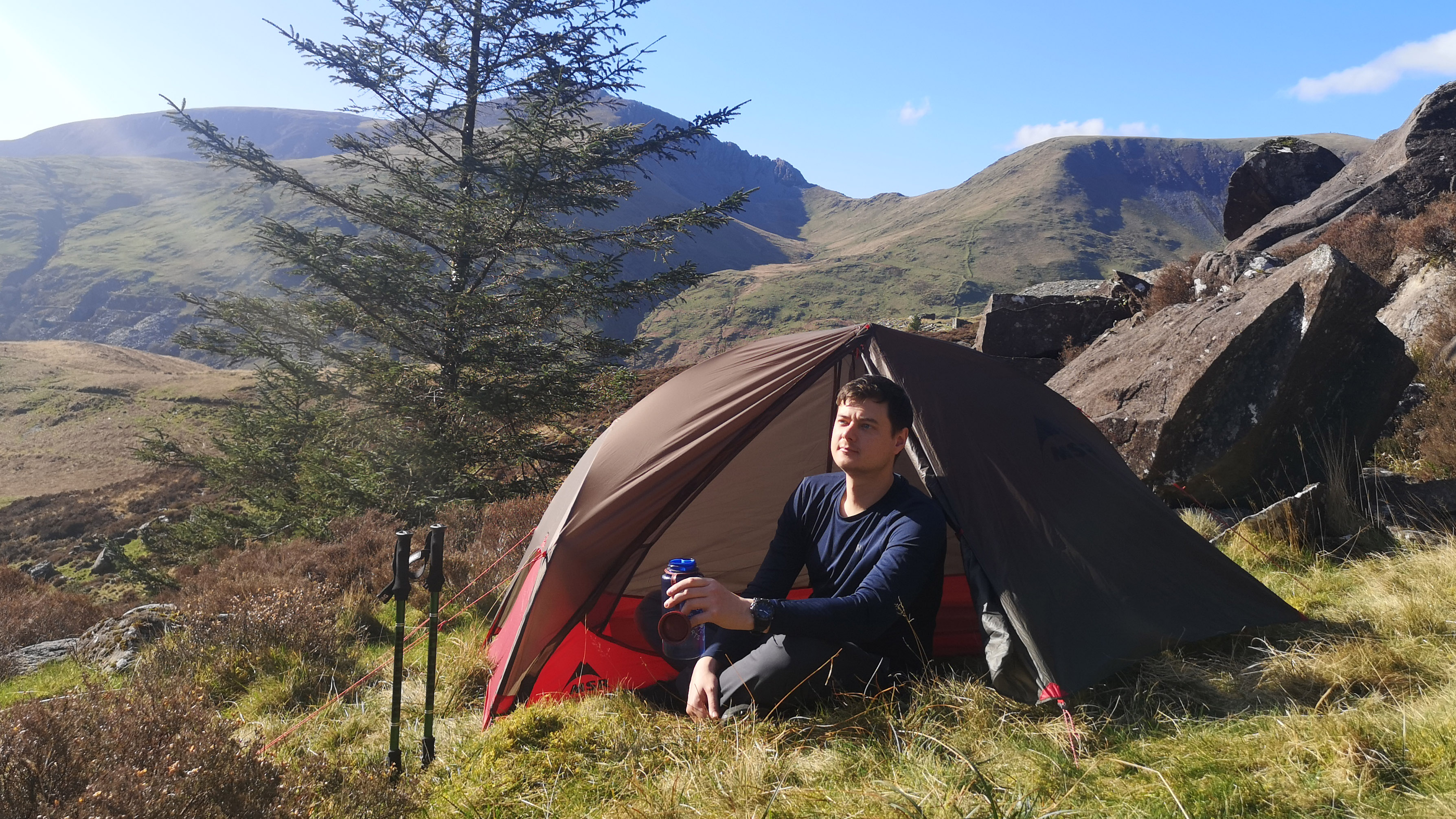
Based in Wales' Eryri (Snowdonia) National Park, Matt is one of our main camping experts. His love affair with wild sleeping goes back to his youth and he's enjoyed plenty of long, wilderness backpacking adventures.
All of the camping axes and hatchets featured here have been trialled and tested in campsite and backpacking scenarios, used to chop a variety of wood for different purposes.
For more details, see how Advnture tests products.
How to choose a camping axe or hatchet
Before choosing one, it's worth considering if you need a camping axe in the first place. If you're looking to process the firewood you've been provided with, then great. If you’re employed to work on the land, you may well have need of a camping axe in order to clear trails and make sure recreation areas are safe. However, if you've got visions of roaming the backcountry chopping down trees, you might want a rethink. Remember the leave no trace principles and the fact that decent firewood should be sustainably sourced and should be seasoned for several months anyway.
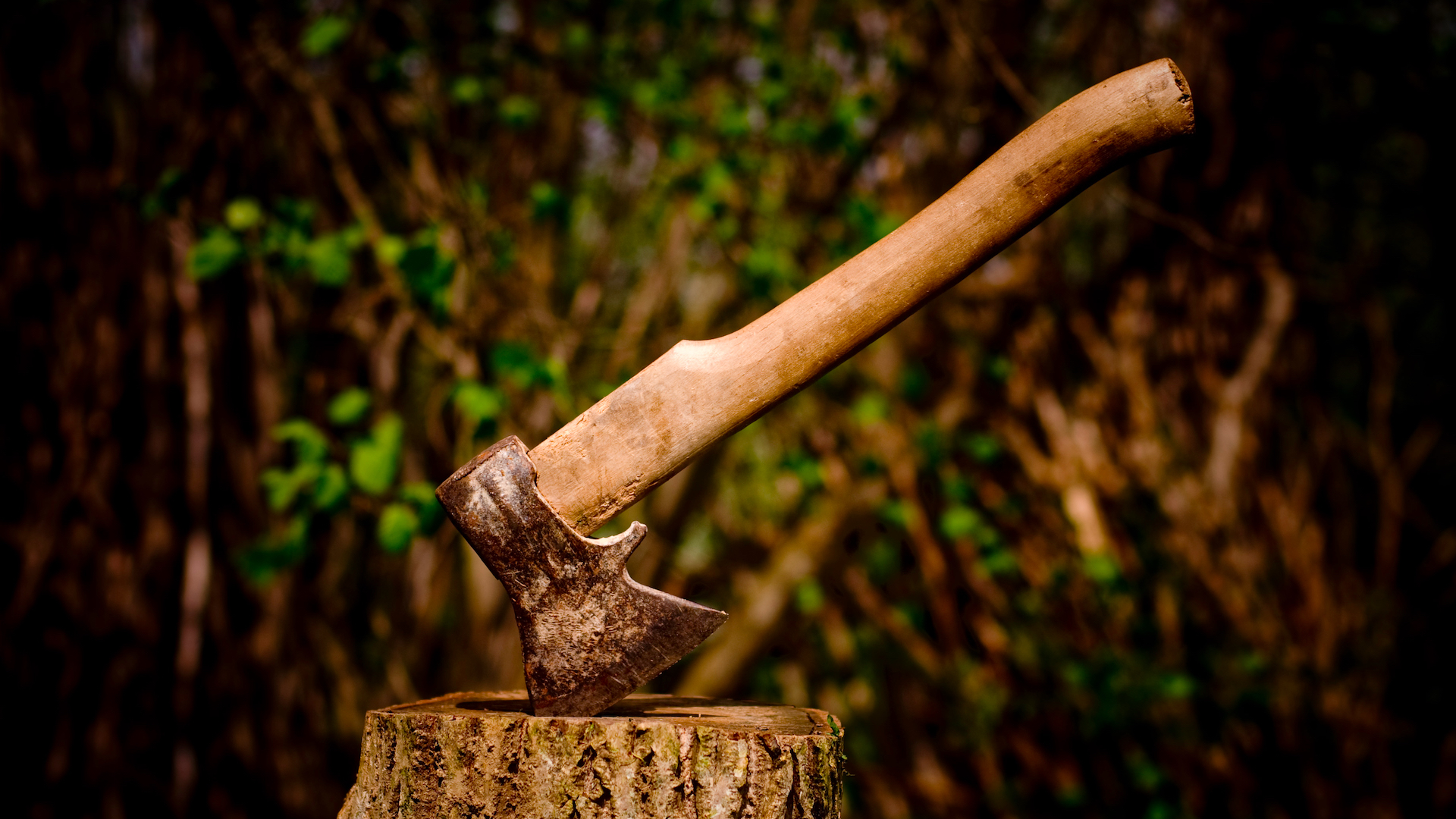
Wood is a natural, renewable resource that mankind has used for millennia – but it should be used responsibly, especially in wilderness areas. Remember to follow local rules and guidance on gathering wood and building campfires, and always practice leave-no-trace principles.
However, if you’re in an area where campfires are permitted, and there’s a suitable stock of deadwood that you can use for firewood, an axe will be an invaluable companion. It will give you plenty of cutting power to chop wood and split logs whilst being relatively lightweight and compact. An axe can also come in handy when building shelters, building camp furniture and practicing other bushcraft skills, as well as for clearing paths and trails. But which type should you go for?
Axe or hatchet (and what’s the difference)?
Today, these terms are often used interchangeably – probably because fewer people use hand tools on a regular basis, which means they’re less familiar with the term 'hatchet'. On the other hand, most people still know – or at least think they know – what an axe is.
Experts will tell you that there is a clear difference between the two, but many will also argue over the finer points and details. In short, though, a hatchet is a specific type of small axe, designed to be used one-handed, usually in a crouching position, close to the ground. It has a short handle (almost always less than 15 inches long), a head that will weigh less than 2lb, and usually has a wedge-shaped profile, with a distinctive lower cutaway or beard. The bit will usually be wedge-shaped to help it cleave through small logs. It is commonly used for light splitting tasks, like processing firewood and kindling.
An axe is bigger and heavier than a hatchet, with a longer handle and (usually) more head weight. A camp axe or hand axe may be short and light enough to use one-handed, but most axes are designed to be used two-handed. A felling axe is designed to cut across the grain, enabling the user to limb or sned branches and cut down trees. This can be useful for clearing trails and campsites that are choked with fallen trees or overhanging branches.
A splitting axe cuts with the grain, just like a hatchet, but has more head weight and length to generate power and leverage, enabling the user to split big logs and rounds or cords of wood. They’re too heavy to be a viable option to bring camping, but you may find one at some campgrounds or in designated wilderness campsites and mountain huts where firewood is provided. See also: how to chop firewood.
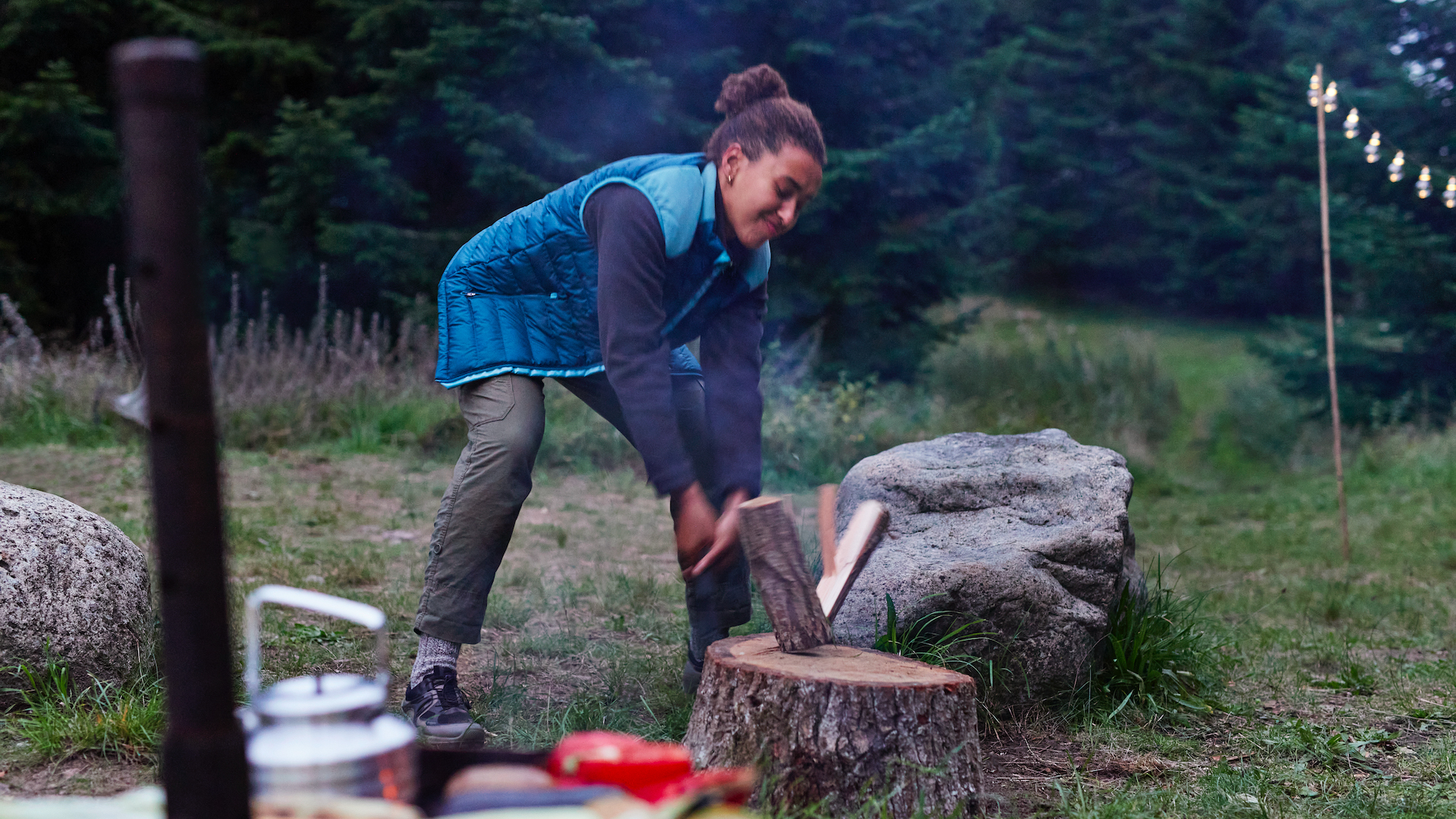
Key features of a camping axe or hatchet
Size and weight A longer, heavier axe delivers more cutting power, but is more tiring to use, requires two hands, and comes with added weight and bulk. If you’re camping or backpacking, you’ll probably only need to split small logs and chop kindling. This is when a hatchet is the perfect tool. Look for one that is small, lightweight and compact so it fits easily in a pack. If you’re canoeing or overlanding in a 4x4-type vehicle, you might need a more robust, heavy-duty felling axe, which will give you the ability to clear fallen logs and branches.
Handle or haft Traditionally, axes were wooden handled or hafted, normally with ash or hickory. Both are hardwoods, with excellent strength and stiffness – the perfect properties for making tool handles. However, some modern hatchets have a one-piece forged steel construction, usually incorporating a plastic or rubber grip. Others use lightweight materials such as glass-reinforced nylon (GRN or fiberglass), polypropylene or other types of plastic and composite material. Wooden handles are seated to the head, or hafted, using a wedge, which is hammered into the eye of the head. This stops the head from wiggling around or shifting up and down when you use the axe. Most wedges are secured with a metal pin, which may be straight or circular.
Look for an axe or hatchet with a sculpted, ergonomic handle that feels comfortable to use. Many feature a bulge or palm swell at the butt end of the handle (sometimes called a knob) for a more secure grip, a slimmer throat (where you grasp the axe) and enlarged shoulders towards the axe head, which adds strength and heft. Slimmer shoulders can be preferable if you need to choke up on the handle for precise cutting work, though.

Head The upper metal part of an axe is called the head. For general camping use, look for an axe with an overall head weight of 1lb-2lb. Most axes have heads made from carbon steel, which is a type of tool steel that balances strength, hardness and wear resistance, so it should stay reasonably sharp. Carbon steel rusts easily, so always dry it between uses. They may be machine forged or hand forged. Other axes might use stainless steel or other types of steel alloy to increase hardness, such as boron steel. Many are painted or coated to provide some protection from rust – but you should regularly oil the axe head with mineral oil too.
Different areas of the head are referred to using specific terminology, which is useful to understand. The back of the head is called the poll or butt. It is usually squared off, and some axes have a robust poll that can be used for hammering. The hole in the top of the head, where it is attached to the handle, is known as the eye. The areas of metal that surround this, sometimes extending down the handle a little way, are called the lips or lugs. The front part of the head is called the bit. It is made up of two cheeks, which slope down towards the cutting edge or blade.
The top of the cutting edge is the toe, while the lower part is the heel. The sharp edge in between is referred to as the blade space. A curved cutting edge is said to have “plenty of belly” – this usually improves the penetration of the bit when it is swung. When penetration is less important (eg, when splitting with the grain), an axe will typically have a flatter cutting edge to increase the contact area with the wood. This improves efficiency even if the user’s striking is less precise. Lastly, the lower portion of the bit that extends the cutting edge is known as the beard. This often has a cutaway area to make the axe easier to swing, and allows the user to choke up on the handle for finer cutting tasks.

Camping axe / hatchet care tips
How to stop your axe from rusting
The carbon steel heads of many axes and hatchets will rust quickly if you don’t look after them. Always clean and dry the bit after use, and ensure your axe is not stored in damp or humid conditions. If your axe head does not have a protective coating or finish, oiling it with mineral oil will also help to prevent rust.
Sharpening
A sharp axe cuts more quickly, more efficiently and is safer too. There are many online tutorials to learn how to sharpen an axe – YouTube is your friend here – but unless your axe head is in a really bad way, the process isn’t too difficult or onerous. Generally, you’ll need a good file and a circular whetstone or sharpening puck.
Cleaning and maintenance
To get the most out of your axe or hatchet, always clean the bit before you put it away. Use the mask or edge protector that is supplied with the axe, and if you don’t have one, make or buy one. When you get home, wipe the head and the handle using soap and water and an old rag to remove any buildup of mud, sweat and grime. Dry it thoroughly and apply a little mineral oil to the head, which will guard against rust. Use boiled linseed oil on the handle to protect the wood.
Why do you need a camping axe?
A camping exe iis particularly useful if you intend to build a shelter from natural resources, make simple camp furniture or tackle other projects that test your bushcraft skills. It’s worth bearing in mind that a small hatchet or a larger axe can also be a very useful asset when backpacking, hiking or canoeing, especially if you’re heading into wilderness areas. It will enable you to clear fallen logs or branches from the trail or cut back tangled undergrowth that might otherwise stop you in your tracks. And, if your camping trip involves hunting game, an axe can help you to process meat, hacking easily through joints and hides.
For all these tasks, there are specialist axes, custom-made for the job at hand. But for general camping use, we’re looking for a solid all-rounder – a tool that is reasonably lightweight and compact, so it can be carried and packed away. Luckily, there’s plenty of choice out there. A small hatchet can give you a surprising amount of chopping power for making kindling and even splitting small logs (see also: how to chop firewood: split your campfire fuel with ease). Or, for more permanent basecamps and extended backcountry trips, a longer and heavier light felling axe is ideal.
- Campfire safety: how to stay safe when managing a campfire
All the latest inspiration, tips and guides to help you plan your next Advnture!
An outdoors writer and editor, Matt Jones has been testing kit in the field for nearly a decade. Having worked for both the Ramblers and the Scouts, he knows one or two things about walking and camping, and loves all things adventure, particularly long-distance backpacking, wild camping and climbing mountains – especially in Wales. He’s based in Snowdonia and last year thru-hiked the Cambrian Way, which runs for 298 miles from Cardiff to Conwy, with a total ascent of 73,700 feet – that’s nearly 2½ times the height of Everest. Follow Matt on Instagram and Twitter.

